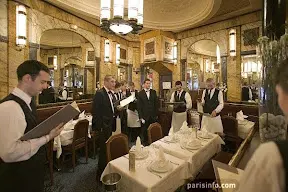
Comeback Of The Parisian Brasserie
The Parisian Brasserie – that venerable institution that is typically open 24/7, where restaurant goers come dressed casually or in their classic Parisian fashion – is making a comeback.
While there are literally over 1,000 brasseries in Paris, several can now be counted on for serving quality and reliable food, with pleasant service and prices that are of reasonably good value by Parisian standards. The menus may differ slightly, but classics such as Escargot, Steak au Poivre, Frites, Sole Meunière, Baba au Rhum and Tarte Tartin remain standard fare and can be terrific if you go to the right place. Les Huitres (oysters) and other shellfish served on giant platters of ice also are exceptionally good, but you should check in advance to make sure the brasserie is serving them (some don’t during the summer).
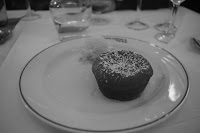
The cuisine itself won’t earn a Michelin star (Alain Ducasse’s Benoit is the sole exception), but these restaurants won’t disappoint you either. The steak is always top quality, the frites, pommes purées (mashed potatoes) and haricots verts (green beans) are a reliable side dish, and the desserts routinely are fabulous. Another thing about the brasserie is that you will not leave hungry. The portions are generous (more so than at a bistro or gastronomy restaurant), so much so that dessert should usually be shared. Wine menus tend to be limited, but many excellent bottles of Bordeaux and Bourgogne can be enjoyed in the 35-50 Euro range, which is a good value for any quality Parisian restaurant.
In a Parisian brasserie, reservations are usually not necessary, beer is drunk as much as wine, and waiters usually are donned in black bowtie with white aprons and black vests, giving them that classic Parisian look. The surroundings are always pleasant, with gleaming brass, dark wood interiors, large mirrors, and old period tulip lamps providing that classic Parisian décor that has not changed much since the 1920s.Â
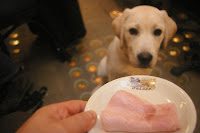
Don’t be surprised to find a dog or two sitting next to you underneath the table with their owner, or maybe even on the chair if they are small enough. Dogs after all, are great dinner companions in many Parisian cafes, bistros and brasseries. We bring our yellow lab, Cosmo, with us as his canine presence assures that we will be treated well. He has been served a roasted bone on fine china and cold water in a champagne bucket, not to mention slices of jambon (French ham).
Our favorite brasseries, all of which are well established, have their own unique style and history, but the common theme with all of them is that the food is of high quality, the atmosphere is splendid, and they all cater primarily to Parisians, though some attract a steady stream of tourists as well.
One note of caution: any brasserie that shows multiple flags in front (e.g., Japan, U.S., U.K., Germany, etc.) should generally be avoided. While some brasseries may have multi-lingual menus, many stick to the local language, which is fine by me, as it is a sign they are focused on serving repeat customers (i.e., Parisians), and thus their standards for quality must remain high.
Our top list of brasseries is below.
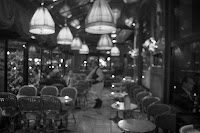
Le Dôme. For some of the finest seafood and oysters in Paris, Le Dôme offers a rich menu of Sole Munière, daurade (White Sea bass), and classic desserts such as Millefeuille, Crème Brulee and Baba au Rhum. With a décor that has changed little since the 1920s, it remains a favorite institution among Parisians and visitors alike. Read more about Le Dôme here.
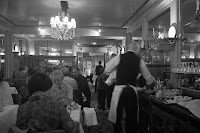
Le Procope. Le Procope claims to be the oldest restaurant in Paris, opening shop in 1626, with famous patrons such as Benjamin Franklin, Voltaire, and Robespierre coming here. In the busy 6th Arrondissement near Boulevard Saint-Germain des Près and Odeon, Le Procope continues to attract a steady stream of Parisians who want a quality meal at a low price. For a quality dinner, in a lively area with rich detail and friendly waiters, Le Procope is as good a choice as any for those on a budget. Read more about Le Procope here.
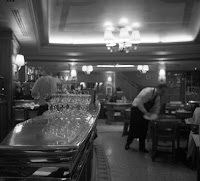
Le Stella. If you want chic and very Parisian, with no tourists in sight, this Tony establishment, in the bourgeois 16th off of Avenue Victor Hugo and Rue de la Pompe, is the place to be and be seen. The food is terrific, with classic dishes such as Escargots, Steak au Poivre, and Sole Munière to choose from. This is where the uppercrust of Paris dine for a family meal, and it is worth checking it out. Don’t be intimidated by the waiters in black bowtie. They are polished professionals that make your dining experience pleasurable, even if they tend to be a bit rushed. Read more about Le Stella here.Â
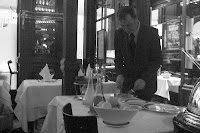
Gallopin. Since 1876, this traditional brasserie has been serving stockbrokers and journalists in the famous Le Bourse area of the second arrondissement. The restaurant has rich wood detail, gleaming brass, and large mirrors to round out the decor. The restaurant focuses on the classics, including Entrecôte, Côte d’agneau (rack of lamb), Pommes Purée (mashed potatoes), Baba Rhum, Millefeuille, Mi-cuit and Crêpes Suzettes (which are flambéed tableside). Read more about Gallopin here.Â
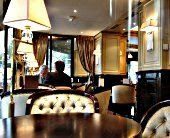
Le Congrès. Le Congrès is a friendly neighborhood brasserie with a stable clientele of repeat customers who faire la bise with the staff, (greet with two kisses on the cheek). Such is life in Paris, where going to a restaurant can be like going to a friend’s home for dinner. This lovely restaurant, with white tablecloth seating and a traditional menu, has excellent dishes including steak, lamb, frites and oysters. Read more about Le Congrès here.
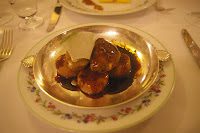
Benoit. Benoit is the only brasserie in Paris that has a Michelin star. The décor is stellar, with big bulb lamps, laced curtains draping the windows, and a small bar with gleaming glass and brass giving the restaurant the atmosphere everyone hopes will accompany their brasserie experience. The menu is more up-scale than a traditional brasserie, which explains the Michelin star rating. Benoit is a brasserie whose reputation may supersede itself, but remains in the upper crust of brasseries in Paris, not only with its Michelin star but also with its prices. Read more about Benoit here.
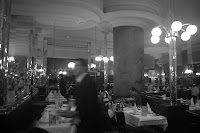
Terminus Nord. Terminus Nord is a French institution, adhering to the fine brasseries that offer great service at good value in a beautiful setting. Located across from Gare du Nord, Terminus Nord is used to serving patrons that are on a schedule. With fresh oysters and other shellfish available on iced platters, this old brasserie has all the standards, including Crepes Suzettes (flambéed tableside), Baba au Rhum, Steak au Poivre, Poulet rôti(roasted chicken), Foie gras (both hot and cold) and Soupe à l’Oignon Gratinée . The restaurant itself has been serving diners since the 1920s and has changed little over the years – it has beautiful mirrors, wall-paintings, bulbed lamps and gleaming brass and mirrors shining all throughout and is a perfect venue when traveling to or from Gare du Nord. Read more about Terminus Nord here.
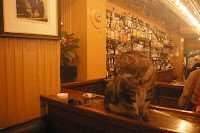
Le Select. For a no nonsense snack, lunch or dinner, Le Select is a great choice, with friendly waiters, a fat cat, and an old-fashioned bar to please everyone. With a Parisian clientele and a steady stream of actors, poets, musicians and international businessmen, don’t be surprised to find a famous face or two when you pop in for a visit. Read more about Le Select here.